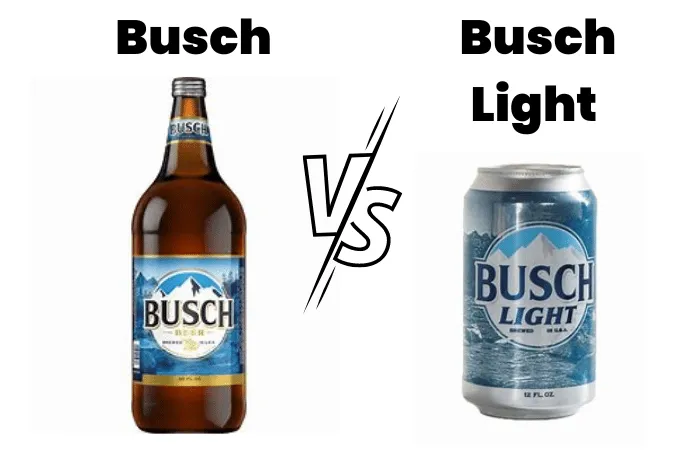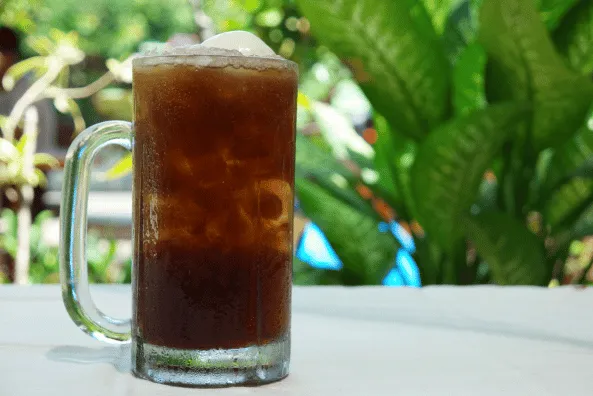Welcome to our in-depth analysis of Busch, one of the most popular light beer brands on the market. This blog post will closely examine what makes Busch stand out from other similar beers and why it has become such a beloved brand among beer drinkers.
Firstly, we will explore the history and background of Busch and its parent company Anheuser-Busch Brewing Company. We’ll examine how they have maintained their position in the market over time. Then we’ll then delve into the different types of light beers Busch offers, including their flagship product, Busch Light. Further we will investigate their flavor and alcohol content to comprehend what differentiates them from popular light beers such as Bud Light, Coors Light, Miller Lite, and Natural Light.
In addition, we’ll also discuss some recent developments within the Busch brand, including new products like Bud Light Platinum and how they have impacted its popularity among beer drinkers.
Table of Contents:
- Origins and History
- Ingredients and Brewing Process
- Flavor Profile and Mouthfeel
- Color & Alcohol Content
- International Bitterness Unit (IBU)
- FAQs in Relation to Busch vs Busch Light
- Conclusion
Origins and History
Busch and Busch Light have a rich history that began in 1955 when the Anheuser-Busch Brewing Company introduced the first Busch beer. It sold billions of cans and maintains a 3% market share. In 1989, Busch Light was introduced as a low-calorie option with fewer sugars used during manufacturing.
Anheuser-Busch has done an excellent job marketing both beers through various campaigns, such as making Busch Light the official beer of the Country Music Association Festival or putting cans into special packaging to support the farmers’ campaign. Both brands have identical alcohol levels, however some may prefer Busch Beer’s full flavour.
Others might opt for its lighter counterpart – Busch Light – which is slightly less sweet than its predecessor.
The brand has also been competing against other light beers like Coors Light, Miller Lite, Natural Light, and Budweiser’s own Bud Light Platinum by offering unique promotions such as limited edition can designs or exclusive events for loyal customers. This strategy has enabled them to remain relevant among beer drinkers, from casual consumers to craft aficionados seeking new flavors and experiences in their quest for great-tasting brews.
The origins and history of Busch and Busch Light are intertwined, with the former being developed in 1955 as a lighter version of its predecessor. This article will explore the ingredients and brewing process used to create these two distinct beers.
Busch vs Busch Light: Ingredients and Brewing Process
Busch and Busch Light are two of America’s most commonly consumed brews. Anheuser-Busch Brewing Company, an InBev subsidiary, produces Busch and Busch Light. Though their brewing techniques and components may be alike, some slight distinctions set them apart.
Ingredients
The main ingredients used to produce Busch and Busch Light include barley malt, corn syrup, hop extract, yeast strains, and water from deep aquifers beneath their brewery. The beer is then bottom-fermented at cold temperatures for several weeks, giving it its drinkable taste profile, with cracker and lemon hints dominating the flavor while still allowing a slight maltiness.
Regarding the ingredients and brewing process, Busch and Busch Light are brewed using barley malt, corn syrup, hops, yeast, and water. However, they differ in their alcohol content and other minor components that give each beer its unique flavor profile. Next, we’ll analyze the distinctions between these brews regarding their taste and feel.
Busch vs Busch Light: Flavor Profile and Mouthfeel
The flavor profile of Busch and Busch Light is a point of differentiation between the two beers. Despite sharing many similarities due to their identical ingredients list and brewing process, tasters describe them similarly as crisp with a slight bitterness; however, there are subtle differences in the flavors present.
The flavor of Busch and Busch Light
Busch beer has been described as having a “mushroomy” taste not found in its light counterpart. The lighter version tends toward citrusy or fruity aromas instead. This difference in taste could be due to the higher alcohol content present in Busch (5% ABV) than in other light beers like Bud Light Platinum (6%), Coors Light (4.2%), Miller Lite (4.2%), and Natural Light (4%).
Mouthfeel of Busch and Busch Light
Both versions have an exceptionally smooth mouthfeel, attributed to Anheuser-Busch Brewing Company’s use of only top-quality hops, barley malt, yeast, water, and rice during production – making it one of the most popular brands amongst beer drinkers today. Its unique blend creates an experience unlike any other when drinking either variety. Whether enjoying a cold glass on a hot summer day or savoring each sip at your favorite barbeque spot, you won’t regret choosing either for your next outing.
Busch and Busch Light: Color, Alcohol Content, and Calorie Count
Color
The two beers have virtually identical clarity in appearance; however, when it comes to head retention, Busch Light falls short of its namesake due to its lighter body style, making it more suitable for refreshment on hot summer days or after strenuous activity than regular Busch beer.
Alcohol Content
Alcohol content can also vary slightly between these two brews, with Busch having an ABV (alcohol by volume) of 4.6%, whereas Busch Light clocks in at 4%. While this may not seem like much of a difference initially, over time, drinking multiple cans or bottles could add up quickly, so if you’re looking for something with less alcohol content, going for the light version might be your best bet.
Calorie Count
The higher calorie count in the original Busch is due to its slightly higher alcohol content, which gives it a somewhat stronger flavor profile than its light version. It makes it ideal for those who prefer a bolder taste when drinking beer and those looking for something with more kick than what’s typically found in light beers like Coors Light or Miller Lite.
Compared to other popular beers such as Budweiser or Bud Light Platinum, both versions of Busch offer drinkers a milder experience that still packs plenty of flavor without being too overwhelming on the palate. While some may find this lacking in complexity compared to craft beers or imports like Heineken or Corona Extra, others appreciate the straightforwardness and refreshing quality of these classic American lagers – especially during hot summer days.
Busch vs Busch Light: International Bitterness Unit (IBU)
The International Bitterness Unit is a scale employed to evaluate beer’s bitterness, considering iso-alpha acid levels developed during boiling, which affect the beverage’s taste. It is calculated by measuring the amount of iso-alpha acids produced during the boiling process and contributes to a beer’s overall taste. Beers with higher IBU ratings tend to be more bitter than those with lower ratings.
Busch Light has an IBU rating of 8, making it one of the lightest beers on the market in terms of bitterness. It makes it perfect for those who want something refreshing without too much bite or complexity from their brews. The low IBU rating also means that Busch Light won’t overpower your food when you pair it with meals like burgers or fish tacos; it will provide a nice balance between sweet and savory flavors.
For comparison, Bud Light Platinum has an IBU rating of 15, while Coors Light clocks in at 10 IBUs and Miller Lite at 11 IBUs, respectively. Natural Light falls somewhere between these two options with 12 IBUs; however, its flavor profile is more complex due to additional ingredients like rice syrup solids being added to the mix during production time.
FAQs in Relation to Busch vs Busch Light
Is there a difference between Busch and Busch Light?
Anheuser-Busch brews both Busch and its lighter counterpart, Busch Light, which was introduced in 1989. Busch, an American-style lager first brewed in 1955, offers a malty taste with a subtle sweetness. In contrast, Busch Light was launched in 1989 as a lighter variation of the original. Busch Light, with its reduced calorie content and alcohol level, is favored by those seeking lighter refreshments.
Why is Busch Light so good?
Busch Light is known for its crisp, clean taste and subtle malt flavor. For those looking to enjoy a refreshing beverage without overindulging, Busch Light’s low alcohol content makes it an ideal choice. Busch Light’s balanced profile of hops, barley, and other grains gives it a smooth finish that appeals to many drinkers. Its wallet-friendly cost makes it attractive for anyone from casual imbibers to craft beer lovers.
What is the alcohol content of Busch Light beer?
Busch Light beer has an alcohol content of 4.2% ABV (alcohol by volume). This light lager is a smooth, easy-drinking beer with subtle notes of grain and hops. It’s perfect for those looking to enjoy a refreshing cold without the strong aftertaste of higher-alcohol beers.
Which is better Busch Light or Natural Light?
It is difficult to definitively say which beer is better between Busch Light and Natural Light. Both beers are light lagers with low ABVs, making them popular with those who don’t want craft or imported beers. Both have subtle notes that may appeal to different palates, but neither stands out.
Conclusion
In conclusion, Busch and Busch Light have distinct characteristics. Comparing their origins, ingredients, fermentation, and brewing processes reveals differences between Busch and Busch Light. Each has its unique flavor profile and mouthfeel with varying alcohol content levels, contributing to a different experience when drinking either. Choosing Busch or Busch Light will depend on your preference, but understanding these key distinctions can help inform your decision-making process.
If you’re looking for the best beer reviews, equipment advice, and subscription services to help make your brews at home, then explore Brew Publik. We offer an extensive selection of Busch vs. Busch Light options that satisfy even the most discerning connoisseur.
Also visit: Discover the Difference: Double IPA vs Triple IPA


